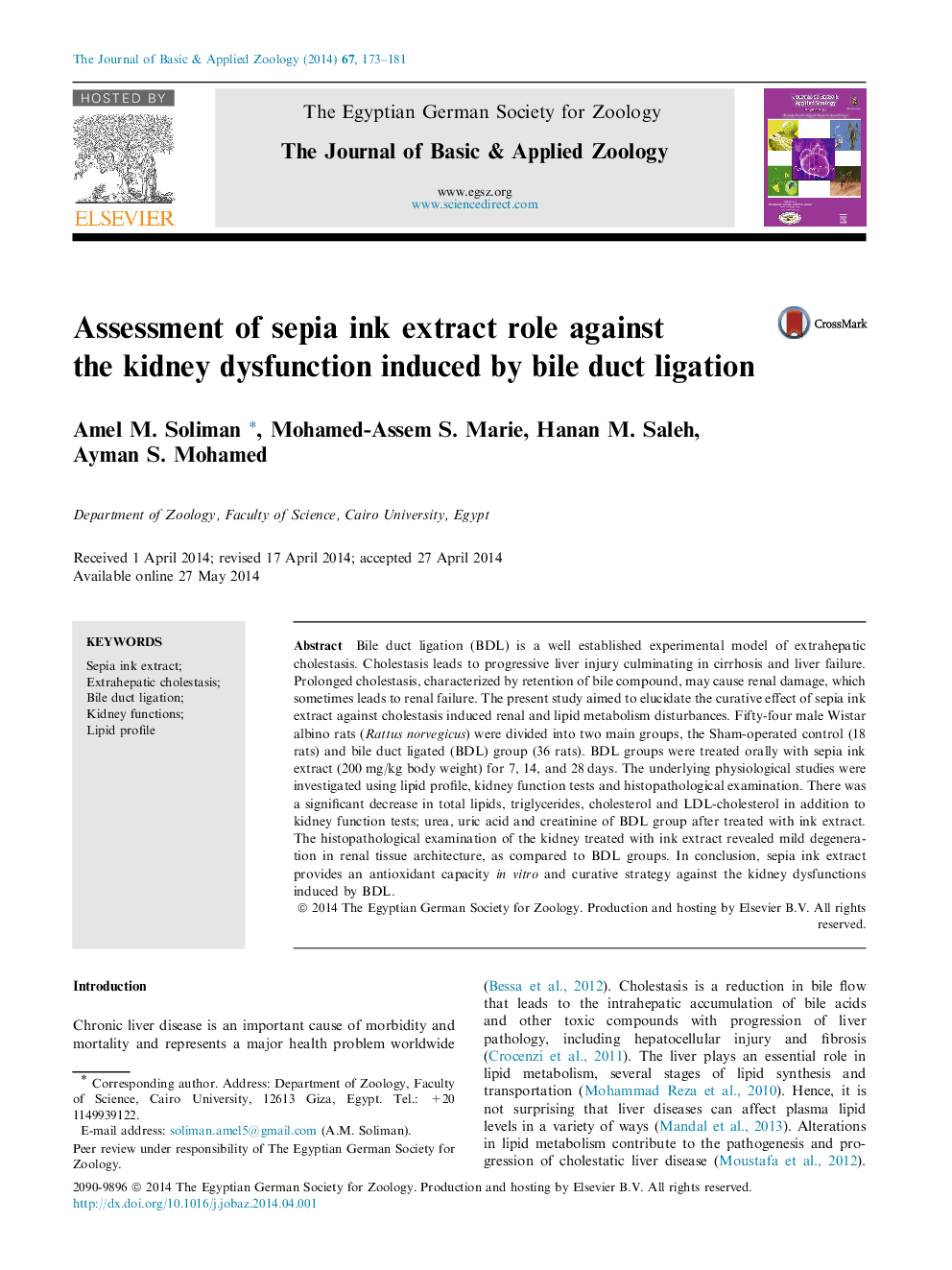| کد مقاله | کد نشریه | سال انتشار | مقاله انگلیسی | نسخه تمام متن |
|---|---|---|---|---|
| 4493496 | 1623665 | 2014 | 9 صفحه PDF | دانلود رایگان |
Bile duct ligation (BDL) is a well established experimental model of extrahepatic cholestasis. Cholestasis leads to progressive liver injury culminating in cirrhosis and liver failure. Prolonged cholestasis, characterized by retention of bile compound, may cause renal damage, which sometimes leads to renal failure. The present study aimed to elucidate the curative effect of sepia ink extract against cholestasis induced renal and lipid metabolism disturbances. Fifty-four male Wistar albino rats (Rattus norvegicus) were divided into two main groups, the Sham-operated control (18 rats) and bile duct ligated (BDL) group (36 rats). BDL groups were treated orally with sepia ink extract (200 mg/kg body weight) for 7, 14, and 28 days. The underlying physiological studies were investigated using lipid profile, kidney function tests and histopathological examination. There was a significant decrease in total lipids, triglycerides, cholesterol and LDL-cholesterol in addition to kidney function tests; urea, uric acid and creatinine of BDL group after treated with ink extract. The histopathological examination of the kidney treated with ink extract revealed mild degeneration in renal tissue architecture, as compared to BDL groups. In conclusion, sepia ink extract provides an antioxidant capacity in vitro and curative strategy against the kidney dysfunctions induced by BDL.
Journal: The Journal of Basic & Applied Zoology - Volume 67, Issue 5, October 2014, Pages 173–181
